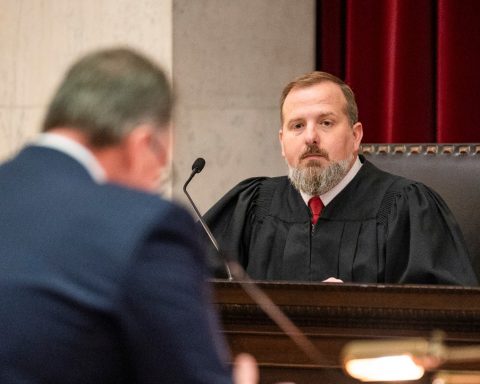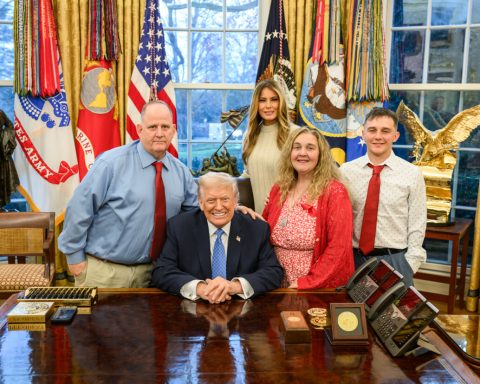VATICAN CITY — Pope Francis, the first Latin American pope, died Monday at age 88.
The Vatican announced the pontiff’s death with a statement read by Cardinal Kevin Farrell, the camerlengo, from the chapel of the Domus Sanctae Marthae, where Francis resided.

“At 7:35 this morning, the Bishop of Rome, Francis, returned to the home of the Father. His entire life was dedicated to the service of the Lord and of his Church,” Farrell said.
Church bells rang out across Rome following the announcement.
Francis, born Jorge Mario Bergoglio in Buenos Aires, Argentina, was elected the 266th pope in 2013, becoming the first Jesuit and the first from the Americas to hold the office. His papacy lasted 12 years and was marked by a call for universal brotherhood, critiques of capitalism, climate inaction and social inequality — positions that drew praise from progressives but stirred criticism among conservatives within the Church.
The pontiff had long suffered from chronic lung problems and had part of one lung removed in his youth. He was hospitalized at Rome’s Gemelli hospital on Feb. 14 after a respiratory crisis developed into double pneumonia. He remained there for 38 days, the longest hospitalization of his papacy.
Despite his declining health, Francis made a final public appearance on Easter Sunday, just one day before his death. From the balcony of St. Peter’s Basilica, he delivered a blessing to thousands gathered in the square below, followed by a surprise ride through the crowd in the popemobile to the delight of onlookers. Earlier that day, he met briefly with U.S. Vice President JD Vance.
Francis’ papacy was defined by efforts to refocus the Catholic Church on social justice issues. While he inspired many with his reform-minded vision, he also faced opposition from traditionalists who viewed his positions as a departure from long-standing Church teachings.
With his passing, the Vatican enters a period known as sede vacante — Latin for “the empty seat” — marking the time when the papal throne is officially vacant. During this transitional phase, most major Vatican decisions are suspended and governance of the Church is assumed by the College of Cardinals under limited authority.
Cardinal Farrell, who also serves as the Vatican’s chamberlain, will oversee the administration of the Holy See, including certifying Francis’ death, sealing the papal apartments and preparing for his burial.
Francis had a significant influence on the future of the Church by appointing nearly 80% of the 138 cardinal electors who are eligible to vote for the next pope. While this increases the likelihood of a successor who supports his progressive vision, Vatican observers suggest the cardinals may seek a more moderate or less polarizing figure to lead the Church’s 1.4 billion followers.
The conclave to elect the next pope must begin between 15 and 20 days after Francis’ death. It will be held in the Sistine Chapel, where cardinals will take an oath of secrecy and remain sequestered within Vatican walls, disconnected from phones, internet and media. The electors will stay at the Casa Santa Marta residence.
Each cardinal casts a secret ballot during twice-daily voting rounds by saying a prayer and placing a card inscribed with Eligo in Summum Pontificem — “I choose as Supreme Pontiff” — into a gold chalice. If no one receives a two-thirds majority, the ballots are burned with a chemical that produces black smoke from the chapel’s chimney, signaling that no decision has been made. White smoke announces the election of a new pope.
Once elected, the new pontiff is asked if he accepts and what name he will take. The cardinals then pledge their obedience before the pope appears on the central balcony of St. Peter’s Basilica, where the senior cardinal deacon will declare, Habemus Papam — “We have a pope.”










